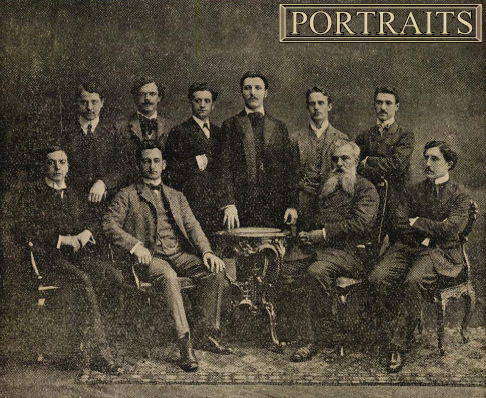 WORD SEARCH: Can you solve Allan Rae's classical music word search puzzles? We're currently publishing one per month.
WORD SEARCH: Can you solve Allan Rae's classical music word search puzzles? We're currently publishing one per month.
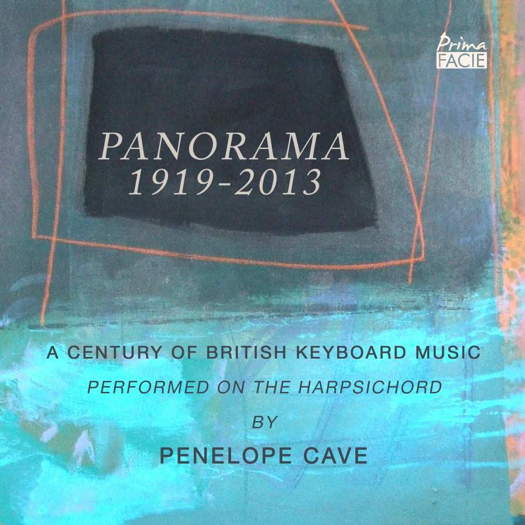 SPONSORED: CD Spotlight. A Fantastic Collection. Penelope Cave Panorama CD. Little-known harpsichord gems, strongly recommended by Alice McVeigh.
SPONSORED: CD Spotlight. A Fantastic Collection. Penelope Cave Panorama CD. Little-known harpsichord gems, strongly recommended by Alice McVeigh.
All sponsored features >>
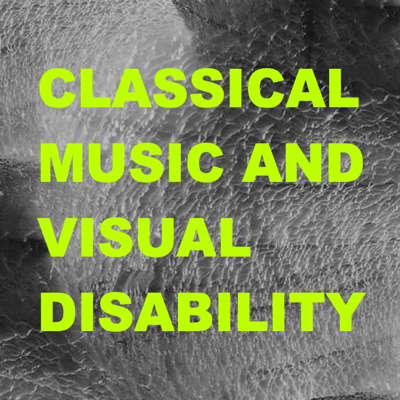 PODCAST: John Dante Prevedini leads a discussion about Classical Music and Visual Disability, including contributions from Charlotte Hardwick, Robert McCarney, Halida Dinova and Giuseppe Pennisi.
PODCAST: John Dante Prevedini leads a discussion about Classical Music and Visual Disability, including contributions from Charlotte Hardwick, Robert McCarney, Halida Dinova and Giuseppe Pennisi.
Zoltán Kodály

by ANETT FODOR
Part I - From the Academy to His First Success
The picture above shows a group of ten men who figure prominently in the history of Hungarian music. It was taken in 1905. This photo was published in the newspaper Színházi Élet (Life in The Theatre), 25-31 December 1921.
On the front row, from left to right, are: Viktor Jacobi, a composer of many popular operettas; Róbert Meszlényi, the author of several celebrated books on the history of music; János (Hans) Kössler, the distinguished professor of composition for all of the above and Sándor Kovács, who was also a well-known music pedagogue.
On the second row, from left to right: Albert Szirmai (Sirmay) was another well-renowned operatta writer as well as being both friend to and publisher of George Gershwin in New York; Zoltán Kodály was a composer, pedagogue, ethnomusicologist and linguist combined; Ervin Lendvai was a composer and choral conductor in Germany, who premiered Schoenberg's choral work Glück; Aladár (Alfred) Szendrei (Sendrey) was a writer, composer, conductor and professor in many European cities and the United States; Leó Weiner was also a composer and a professor of composition and chamber music in Budapest.
Béla Bartók and Imre (Emmerich) Kálmán had completed their studies in the Budapest Academy of Music one year before this photo was taken. So, it can be concluded that the first decade of the twentieth century was a golden era in the history of the Hungarian Academy of Music.
None of the above mentioned young composers was lacking in talent. Much of their music showed the influence of German Romanticism, which is maybe why they were rather successful. Only two - Bartók and Kodály - chose highly original, never-before-heard styles of their own. The musical language of both had nurtured its roots in each's own collection of and research into pure folk music.
Kodály's ethnomusicological activities began a little before Bartók's own. He delved into authentic folk songs to make his collection. Kodály spent his childhood in Galánta - then in the Kingdom of Hungary, now in Slovakia. He started gathering material initially in the northen part of the Hungarian speaking region, extending his research into the Hungarian villages in Bukovina after 1910. He published The Collection of Folk Songs in Mátyusföld in a Hungarian academic periodical entitled Ethnographia (1905). It contained ten songs from his first work in the field.
Kodály was not only a musician, but also a qualified linguist. Parallel to his musical studies, he read Hungarian and German at the Péter Pázmány University in Budapest. Both his interests - folk music and linguistics are reflected in his doctoral thesis, The Stanzaic Structure of Hungarian Folk Songs (1906).
The Kodály-Bartók friendship gradually deepened after Bartók read Kodály's newly published work on Mátyusföld. Kodály's article aroused Bartók's curiosity. He asked questions about field work and collecting folk melodies and received much excellent advice from Kodály. Although Kodály and Bartók went to the same Academy of Music in Budapest, they never acually met there. Interestingly, the two young composers made each other's acquaintace for the first time in Emma Schlesinger/Sándor's house. They both taught Emma composition. She had an unhappy marriage to Henrik Gruber, so music was a kind of consolation to her. She was highly talented, won composition competitions in London and Paris and collected folk songs. As both Emma's father and her first husband were rich, she could afford to have a musical salon in Budapest. Many famous and influental people would attend.
Kodály and the almost twenty years older Emma, fell in love, eventually marrying in August 1910. They lived happily together until her death (1958).
Kodály's first experience of a 'Composer's Evening' took place in Budapest on 17 March 1910, the birthday of his future first wife (Emma).
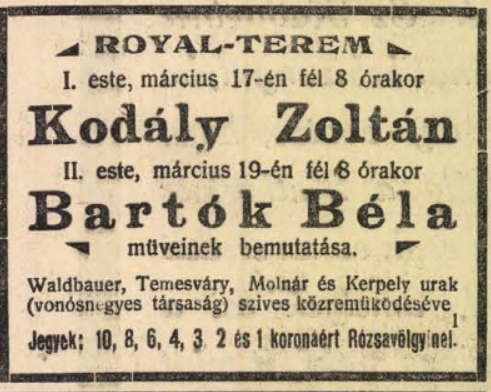
Kodály and Bartók's composer's evenings. A classified advertisement in the old Hungarian Newspaper, Pesti Napló (Diary of Pest), 6 March 1910
Bartók actively participated in this event. It was he who played Kodály's Sonata for 'Cello and Piano (Op 4) with the cellist Jenő Kerpely as well as ten piano pieces (Op 3). The First String Quartet (Op 2) was performed by the prodigiously gifted Waldbauer-Kerpely-Molnár-Temesváry quartet. Bartók's own 'Composer's Evening' took place in the Hotel Royal two days later. The newspaper reviews were unflattering. Only a few people understood the two young Hungarians' entirely new compositional language and style.
In the following photo taken in March 1910, Bartók is sitting to the left and Kodály to the right. Both of them are holding either scores or instrumetal parts. The other four young men are the members of the outstanding string quartet mentioned above. From left to right they are János Temesváry, Antal Molnár, Jenő Kerpely and Imre Waldbauer.
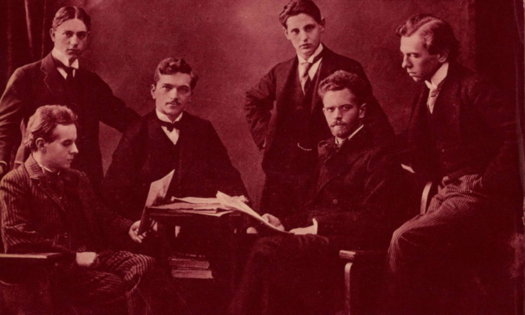
Photo published twenty years after the first 'Composer's Evening' on 17 March 1935 in Pesti Napló Képes Műmelléklete - the Picture Supplement of the old Hungarian newspaper, Diary of Pest
Kodály's second 'Composer's Evening' took place eight years later in the Academy of Music, Budapest (on 7 May 1918). Those in attendance could hear Duo for Violin and Cello (Op 7), Sonata for Solo 'Cello (Op 8) and the Second String Quartet (Op 10). Again, Bartók actively took part in his friend's evening by accompanying Kodály's songs. The audience applauded the music and especially, the talented musicians. However, the newpapers were harshly critical just as they had been previously in 1910. One of them wrote - 'these works of Kodály are perverse manifestations'!
Listen — Zoltán Kodály: Sonata for solo cello, Op 8
© István Várdai :
His first notable success came just after the First World War. Psalmus Hungaricus is a choral work for solo tenor, mixed choir, children's choir, orchestra and organ. The work was commissioned to celebrate the fiftieth anniversary of the unification of three cities: Buda, Pest and Óbuda.
At the gala performance on 19 November 1923, Psalmus Hungaricus (Op 13), Bartók's Dance Suite and Dohnányi's Festival Overture were performed. Ernő Dohnányi was conducting.
Listen — Zoltán Kodály: Psalmus Hungaricus
© London Symphony Orchestra / István Kertész :
It is unusual that Kodály chose a sacred theme for a secular event. The Biblical text, based on Psalm 55, was translated into Hungarian by Mihály Kecskeméti Vég in the sixteenth century. It is a passionate, but bitter complaint filled with disillusion and despair. David confesses that he is helpless, beacause his friends betrayed him. He feels alone and hopeless.
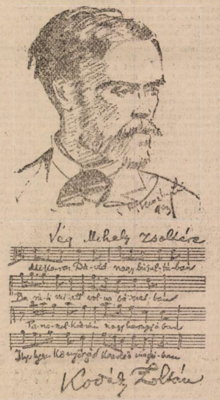
A sketch of Kodály, to which he added manuscript in his own hand, printed in Nemzeti Ujság (The National Newspaper) on 20 November 1923
As it was an official celebration, the audience was not entirely comprised of music lovers. In spite of this they were most receptive and enthusiastic. Everything about the work captured the public's attention and the general feeling was that a masterwork had truly been heard that evening.
The Psalmus Hungaricus' first performance outside Hungary took place in German under the baton of Volkmar Andreae in Zürich on 18 June 1926. The concert hall was full. The work was a resounding success and marked a turning point in the international recognition of Zoltán Kodály. After the performance Furtwängler, de Falla and other well-known musicians congratulated Kodály on his masterwork.
Feature continues on the next page >>
Copyright © 23 September 2019
Anett Fodor,
Győr-Moson-Sopron, Hungary



